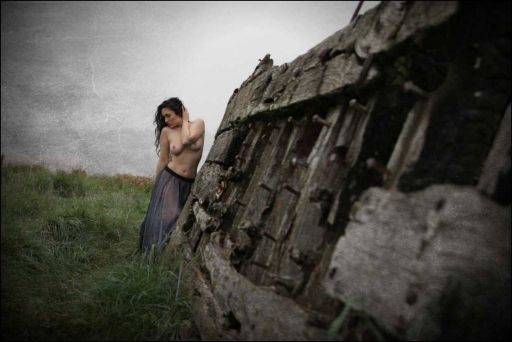Leading Lines

THINKING:
As photographers, we are always naturally inclined to position a subject in front of a background and shoot square on to the background. That is how 99% of all images look.
However, to build strong leading lines, the quickest and easiest way is to shoot obliquely to the background instead.
This gives you to immediate benefits: (1) you now have leading lines and (2) you now have a picture that does not look like the other 99%.
SEEING:
This image has powerful lines of rough wood taking the eye straight to the soft skin tones of Leah in the centre of the image. In this image there is interest in the rotting, weathered woodwork. Leading lines do not have to be so strongly visible and can even be implied.
Once the eye arrives at Leah, we see her upper body strongly contrasted against the pale sky and the purple dress contrasted in colour against the green grasses.
With the brightness in the upper left and centre of the image, the much darker woodwork takes on a foreboding nature that has been exaggerated by the use of a strong vignette.
DOING:
This image has a strong texture layer applied in post-processing. The sky was a washed out grey with no interest in it whatsoever (in fact it was drizzling when we were shooting). So I applied this texture over the whole of the image, but toned down over Leah.
The texture is deliberately clear and artificial. There is no pretence of reality to it.
share:
This is an excerpt from "Art Nude Photography Explained" which shows you how to create nude images and how to read and evaluate art nude photographs
It is available on Amazon
or on
the store